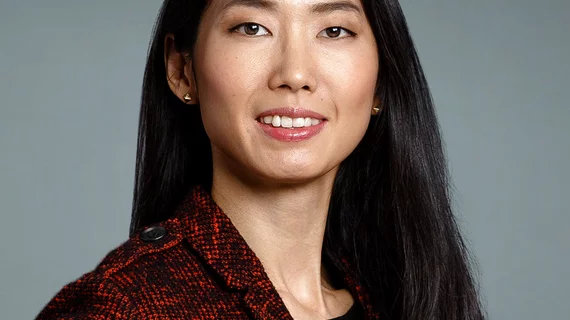Q&A: Stella Kang on the important connection between mammography and other preventive health services
A recent study published in Radiology found that, among Medicare beneficiaries, women who undergo breast cancer screening with mammography are much more likely to utilize other preventive services than unscreened women.
Stella Kang, MD, MSc, assistant professor of radiology and population health at NYU Langone Health in New York, was the lead author of that study. She and her colleagues explored Medicare claims data from 2010 to 2014 to see how undergoing a mammogram impacts a woman’s likelihood of undergoing Pap smear, bone mass measurement and influenza vaccination in the two years following mammography.
Kang spoke with Radiology Business about the Radiology study, what it could mean for imaging providers going forward and much more.
Read below for the full conversation:
Radiology Business: Your team’s research found that Medicare beneficiaries who undergo mammography are significantly more likely to utilize other preventive health services. Did this surprise you at all? What did you expect going into your research?
Stella Kang, MD, MSc: Going into the research, I guessed that woman who received screening mammography may already have a tendency to utilize other preventive services that are covered. So finding that trend was not necessarily surprising. What was surprising, however, was that even if patients didn’t have those three preventive services of interest (Pap smear, bone mass measurement and influenza vaccine services) in the two years prior to their mammogram, undergoing the mammogram still made them more likely to undergo those services afterwards.
Also, I had thought we might see that having a false-positive screening mammogram had some sort of negative effect on a woman’s likelihood of undergoing those other preventive services, but we didn’t see that at all.
That finding related to false-positive screening mammograms seems especially significant. Can you speak a bit about the importance of this finding?
Sure. First, because it’s an important distinction to make, we looked into false-positive screening mammograms and not full diagnostic evaluations that would have led to a biopsy. But, yes, I do think this is an important finding. In the minds of policy makers and even the U.S. Preventive Services Task Force, there are concerns about the impact false-positive results can have on patients, specifically the anxiety associated with having a positive or indeterminate finding when the end result is that nothing actually needs to be done.
We didn’t see that result in our research. As a whole, women who had that experience actually seemed to use these other preventive services more frequently.
What should imaging providers take away from your team’s research? How might these results impact them?
I think the trends we found are interesting because there may be tie-ins to how patients perceive preventive services and screening tests other than for the purpose of cancer detection. It may be, for example, that the danger of missing an early and very treatable cancer is obviously important to women, so they may feel a connection to wanting to undergo a mammogram and these other tests. This may also help providers explain how various preventive measures are important to early disease detection.
The RSNA press release about your study mentioned that plans are already in the works for this research. What can you tell me about those plans?
There is a need to look at screening mammography use among women and how it may be associated with even more tests—colorectal cancer screening, for example.
Colorectal cancer screening is more complicated because multiple modalities can be used, and patients can sometimes switch from one modality to another. We didn’t want to risk there being an inaccurate number representing how many patients had gone in for further screening as we worked on this study. But for future studies, researching ties between screening mammography and other forms of cancer screening is something obvious that needs to be done.
What other trends, in either radiology or population health, are you paying close attention to right now? Why do they stand out to you?
I think one of the most exciting trends right now is how we’re using big data to answer big questions about healthcare utilization, specifically imaging utilization. It helps us generate new questions about how imaging can be applied to improve decisions for specific subsets of the population.
Additional coverage of this research can be read here. The full study is available here.

